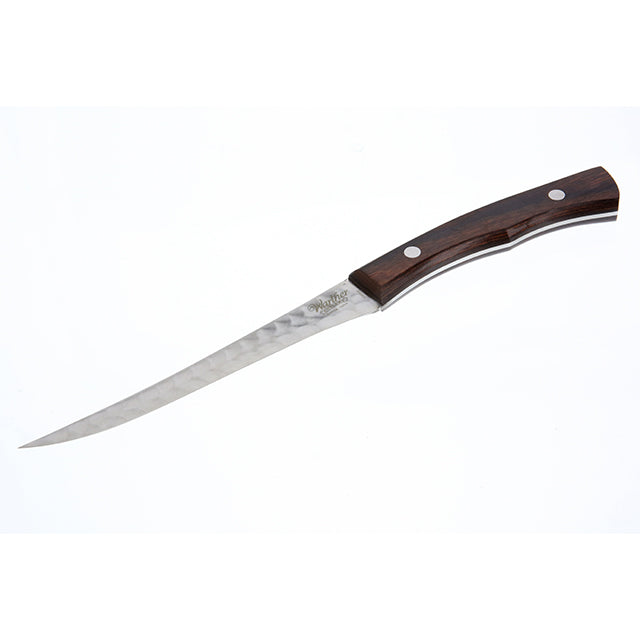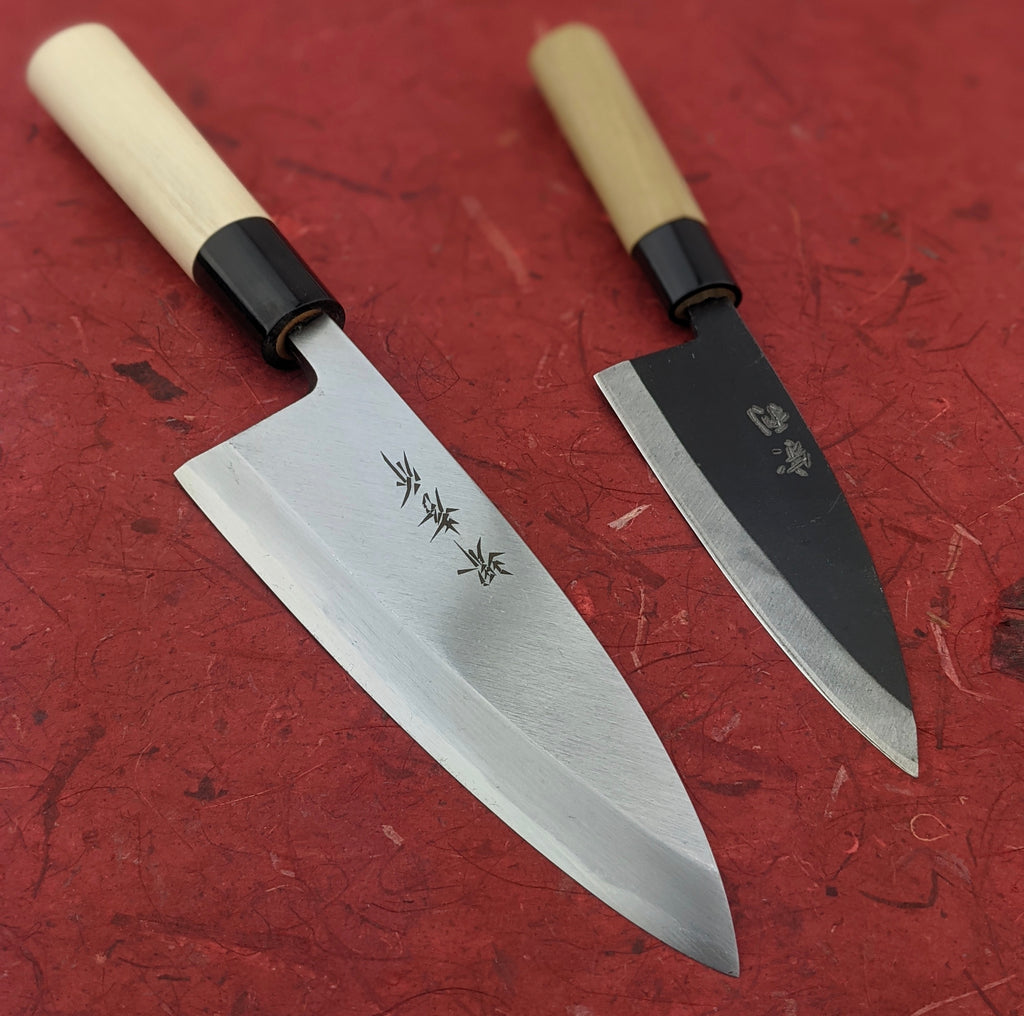How to protect your fish knife safely
Wiki Article
The Ultimate Overview to Keeping Your Fish Knife for Long Life and Performance
Preserving a fish knife is crucial for guaranteeing its durability and ideal performance. Correct treatment includes a series of actions, consisting of cleaning, sharpening, and storage space. Each stage adds to the knife's performance during use. Understanding these practices can make a significant difference in the lifespan of this vital device. Several customers ignore critical facets of maintenance that can lead to damage. What are these often-forgotten actions?Selecting the Right Fish Knife for Your Demands
When selecting the optimal fish knife, what key features should one think about? The blade's versatility is vital, permitting accuracy while filleting various fish types (fish knife). A thin, slim blade frequently improves maneuverability, making it less complicated to browse around bones and skin. The product of the blade additionally plays a vital duty; stainless-steel provides durability and rust resistance, essential for regular direct exposure to waterAdditionally, the manage's layout ought to not be forgotten. It should supply a comfy hold, preferably featuring non-slip materials that make certain security throughout use. The knife's size is another variable; shorter blades can use far better control, while longer blades may be valuable for larger fish. Lastly, weight is very important; a well-balanced knife enables expanded use without tiredness. By very carefully considering these functions, one can pick a fish knife that meets certain needs for reliable fish prep work.
Proper Cleansing Techniques After Each Use
Appropriate cleansing techniques after each usage are vital for keeping the longevity and performance of a fish knife. Promptly after filleting fish, it is crucial to rinse the knife under cozy water to remove scales, sludge, and any residual fish juices. Utilizing a soft sponge or towel, the user ought to delicately scrub the blade and deal with, paying unique attention to any type of crevices where particles might gather. Prevent using rough products that might damage the blade's surface area. After washing, the knife must be extensively dried out with a clean towel to stop moisture-related damage. If the knife has a wooden manage, using a food-safe mineral oil occasionally can help preserve its stability. Keeping the knife in a marked sheath or magnetic strip can additionally protect it from unintended damage and guarantee it stays clean and all set for future use. Regular adherence to these cleaning methods will certainly enhance the knife's life expectancy and effectiveness.Developing Your Fish Knife: Devices and Methods
Developing a fish knife is an important process that improves its performance and ensures clean cuts while filleting. To attain optimum sharpness, several tools can be employed. A whetstone is taken into consideration among the most reliable approaches, permitting for specific control over the developing angle. Customers should wet the rock and keep a consistent 20-degree angle while gliding the blade across its surface.Alternatively, a developing pole can be made use of for regular upkeep, straightening the blade's edge without removing product. For comfort, electric sharpeners use a fast solution, though they may not supply the very same level of finesse as hands-on approaches.
No matter the chosen technique, it is important to complete with a natural leather strop to polish the edge, making certain a sharp coating. Routine developing not only extends the life of the fish knife but additionally improves the total performance of the filleting process.
Storing Your Fish Knife for Optimal Defense
After developing a fish knife, focus has to transform to its storage to preserve the blade's stability and performance. Proper storage is necessary for preventing rust, damages, and dulling. Preferably, a fish knife ought to be saved in a protective sheath or knife roll, which guards the blade from contact with environmental variables and various other utensils (fish knife). Magnetic strips can likewise work, enabling accessible and risk-free storage while maintaining the blade safe
Routine Maintenance Routines to Adhere To
A regular upkeep routine is important for maintaining the functionality and look of a fish knife. Regular cleansing after each use is important; washing the blade with warm water and moderate soap eliminates any kind of residue. It is suggested to dry the knife thoroughly to stop rust. Periodically, a light application of food-safe mineral oil can aid shield the blade and keep its luster.
Last but not here least, keeping the fish knife in a protective instance or sheath avoids accidental damages and keeps it all set for use. Following these upkeep regimens will considerably boost the longevity and performance of the fish knife.
Regularly Asked Inquiries
Can I Use My Fish Knife for Various Other Sorts Of Fish?
Yes, a fish knife can be used for other sorts of fish. Nevertheless, the performance may differ depending on the knife's design and the certain fish being refined, influencing performance and accuracy throughout preparation.What Products Are Ideal for a Fish Knife Blade?
Stainless steel and high-carbon steel are thought about the most effective products for a fish knife blade. Stainless-steel offers rust resistance, while high-carbon steel supplies premium sharpness and edge retention, crucial for effective fish prep work.Just how Often Should I Replace My Fish Knife?
A fish knife must commonly be changed every three to five years, depending upon use and upkeep. Routine assessment for signs of wear or damage can likewise assist establish the right time for replacement.Exist Specific Brand Names Known for High Quality Fish Blades?
Certain brand names, like Wüsthof, Victorinox, and Rapala, are renowned for generating premium fish knives. These brands are acknowledged for their longevity, sharpness, and ergonomic designs, making them recommended selections amongst angling fanatics and specialists alike.Can Temperature Level Influence My Fish Knife's Performance?
Temperature level can substantially influence a fish knife's efficiency. Extreme heat may cause blade products to warp, while cool conditions can lead to brittleness. Keeping an ideal temperature is important for preserving the knife's capability and toughness.The knife's length is another factor; much shorter blades can use much better control, while longer blades may be advantageous for larger fish. Quickly after filleting fish, it is crucial to rinse the knife under warm water to get rid of ranges, scum, and any type of residual fish juices. After developing a fish knife, focus has to transform to its storage space to preserve the blade's stability and performance. Ideally, a fish knife must be kept in a safety sheath or knife roll, which guards the blade from call with various other tools and ecological variables. Yes, a fish knife can be used for other kinds of fish.
Report this wiki page